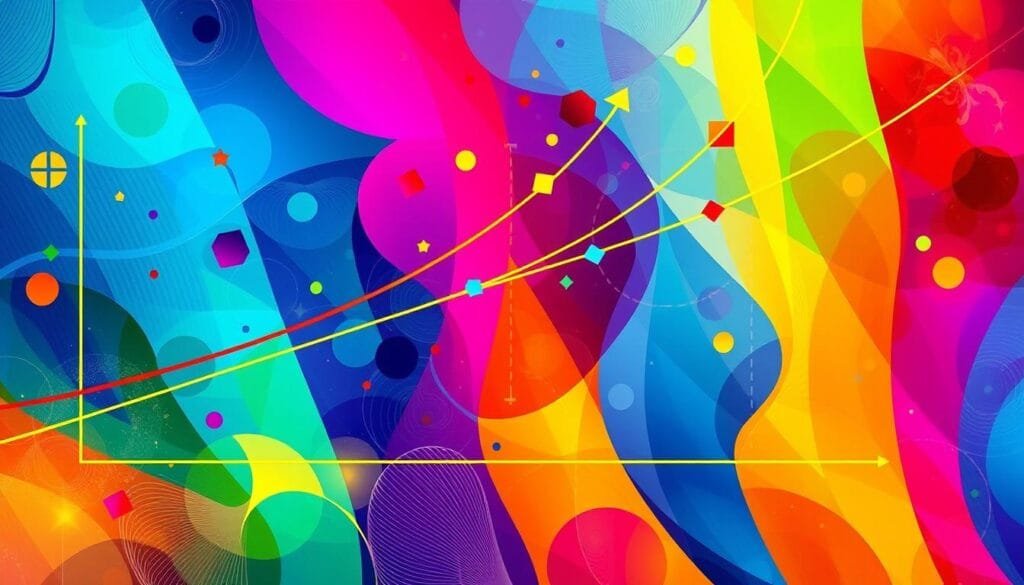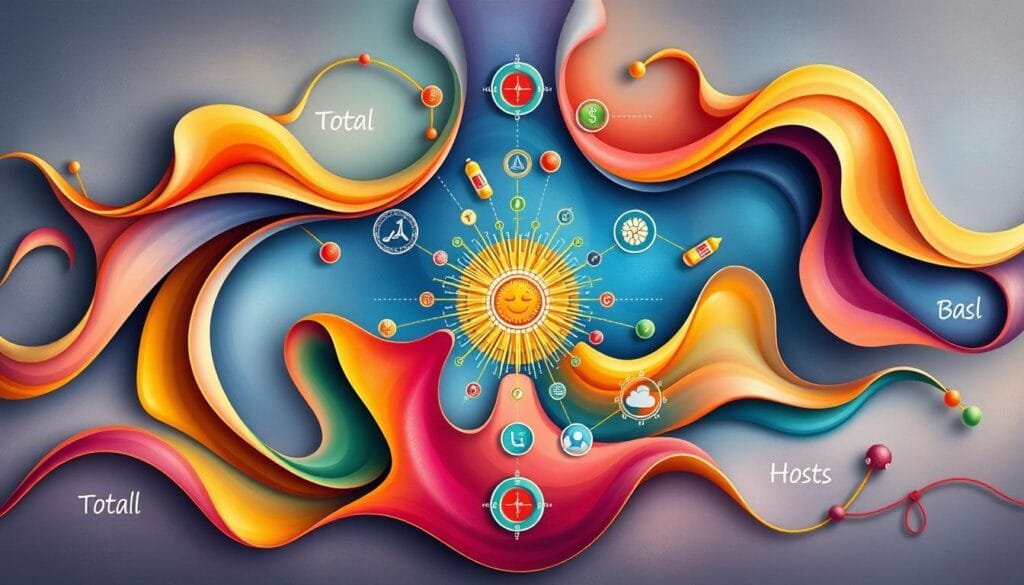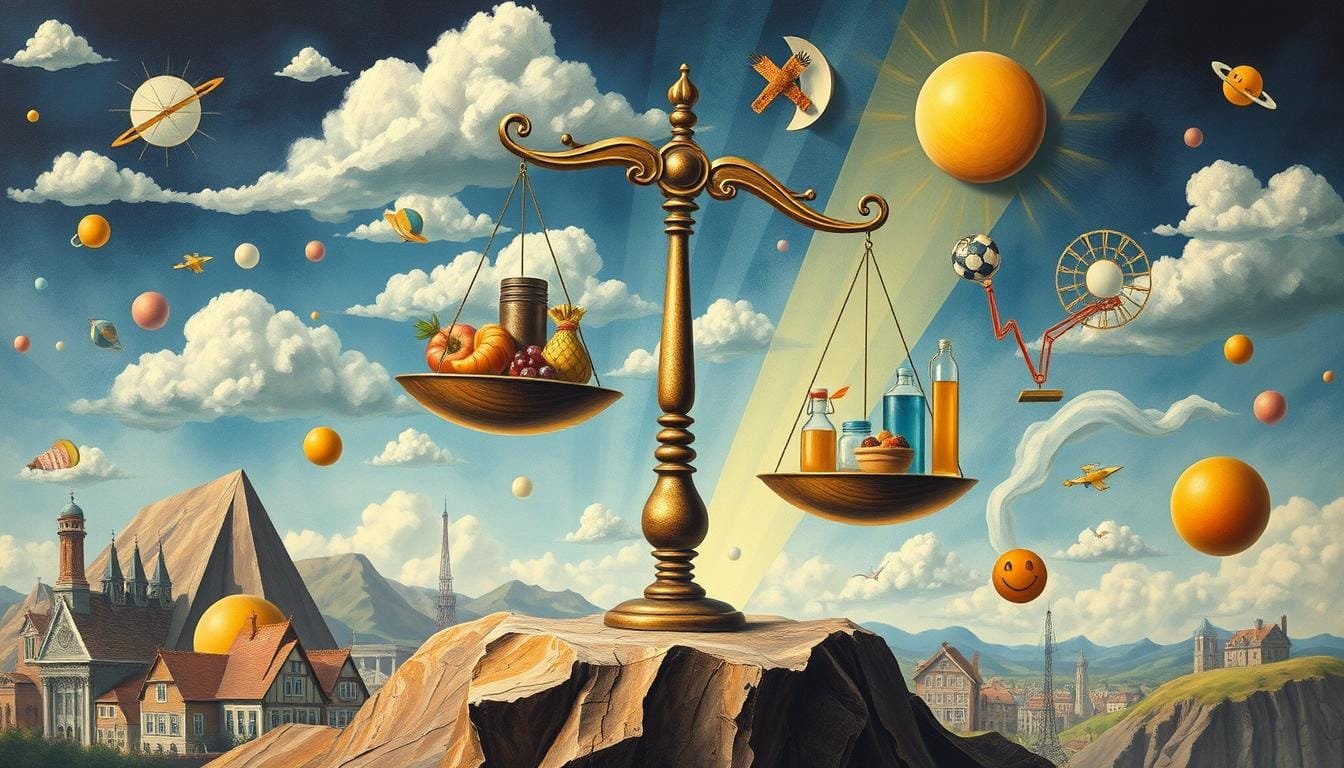Have you ever noticed how the first slice of pizza tastes better than the next ones? This simple thought leads us to the important concept of utility in economics. It tells us about the joy or benefit people get from using goods or services. As we go through this guide on economic utility, we will learn about the complex ideas of utility. We’ll see how these ideas affect what people buy and the prices in the market.
Swiss mathematician Daniel Bernoulli first thought of utility in the 18th century. It is now a key part of economic theory. We discuss different types of utility like form, time, place, and possession. These ideas help us see how people decide what to buy.
Utility theory looks at how people value goods and services they use. It shows us why people buy what they buy and how it sets prices in the economy. Utility is a core concept in economic theory.
In this detailed guide, we’ll explore utility in economics. We’ll see how these theories help predict what people will buy. This info isn’t just for school. It helps in marketing, financial planning, and making policies. It’s all about trying to get the most joy.
Key Takeaways
- Utility measures pleasure or satisfaction from economic actions, showing how people make choices in microeconomics.
- Cardinal utility puts numbers, called “utils,” on goods for easy comparison.
- Marginal utility is about how satisfaction changes with each extra item consumed, crucial for making choices.
- The law of diminishing marginal utility says that more you have of something, the less joy each piece brings.
- People spread their money to get the same amount of joy from each dollar spent on different things.
What is Utility in Economics?
Utility in economics is about how much happiness or benefit people get from products and services. It’s key to get why people make certain choices.
Definition of Utility
The definition of utility started long ago with early economists and has grown into a major idea. It’s about the joy or satisfaction gained from what we buy or use.
Economists look at utility to figure out why we choose what we do. They create models to guess these benefits, which helps in predicting market trends.
Types of Utility: Ordinal and Cardinal
There are two main types of economic utility: ordinal and cardinal. Ordinal utility is about the order of preferences, not how much one is preferred over another.
Cardinal utility, on the other hand, tries to give exact numbers to our satisfaction. It measures happiness in “utils,” making it easier to compare different choices.
Measurement of Utility
Measuring utility in economics is tough because it’s about personal feelings. Ordinal utility is about which we like more, not how much more we like it.
However, cardinal utility gives a specific number to our satisfaction. Economists use these ideas to predict how people will act in the market. These predictions help in making policies and understanding consumer choices better.
Understanding Utility Function
The utility function is key in economics. It’s at the heart of rational choice theory. It shows us how people pick what they like in number form. This section looks closely at the utility function, its role in rational choice theory, and important examples.
Utility Function in Rational Choice Theory
In rational choice theory, people choose what gives them the most happiness. They use a utility function to measure this happiness or satisfaction from products or services. This function helps compare different choices mathematically, showing different likes and dislikes.
Take this example: a utility function \(U(C) = \log(C_d) + \frac{1}{2} \log(C_m)\) shows a person likes dark chocolate twice as much as milk chocolate. \(\log(C_d)\) and \(\log(C_m)\) measure the happiness from dark and milk chocolates, making a 2:1 ratio of preference.

Examples of Utility Function
There are many examples that show how utility functions work:
- Eating 10 units of a product gives 20 utils of happiness. Another unit adds a happiness score of 21 utils, and one more makes it 21.5 utils.
- 100,000 people liking a car adds $200 million in utility. This shows how small changes can have big effects.
- A utility function shows that an umbrella plus a sweater equals the happiness from a rain jacket alone. \(U(\text{nothing}) = 0, U(\text{umbrella}) = 4, U(\text{rain jacket}) = 6, U(\text{umbrella} + \text{sweater}) = 6\).
- The St. Petersburg paradox uses the equation \(U = \log(n)\) to handle unlikely payout structures.
Advantages and Disadvantages
Utility functions have many plus points:
- Quantifiable Analysis: They give numerical values to likes and dislikes. This makes for stronger economic analysis.
- Predictive Power: They help predict what consumer trends and market moves might be.
- Comparison Tool: They let us compare different goods and scenarios easily.
But, they’re not perfect:
- Abstract Nature: Utility is a hard-to-grasp concept. Measuring it directly is tricky.
- Variable Influences: Many factors can change utility, making exact numbers hard to pin down.
- Assumption Bound: The ideas behind rational choice theory don’t always match real life.
Understanding utility functions and rational choice theory is complex. While these functions are great for analysis, we must use them wisely. They have their limits.
Marginal Utility and Its Significance
Marginal utility is a key idea in economics. It’s about the extra happiness we get from using one more of something. Understanding this concept helps us figure out how people make choices.
Concept of Marginal Utility
Marginal utility sheds light on how we act as consumers. It’s the happiness boost from an extra product piece. When buying, we weigh this utility to get the most joy. Imagine two families and their bread. One with seven slices finds the eighth slice very valuable. Another with thirty doesn’t value the next slice as much. This shows why our first choices are often more precious to us.
Law of Diminishing Marginal Utility
The law of diminishing marginal utility tells us a simple truth. The more we have of something, the less each extra piece adds to our happiness. For instance, your first bite of a chocolate bar is amazing. But, by the twentieth bite, it’s not as exciting. This law shows why, after a point, more doesn’t mean better happiness.
- It means that after a while, more of the same adds little to no value for us.
- This idea also explains pricing. Basic things like bread are cheap, while rare items like diamonds are expensive.
Calculating Marginal Utility
To figure out marginal utility, we use a special formula:
| Formula | Explanation |
|---|---|
| MU = ΔTU/ΔQ | This formula means we find marginal utility (MU) by dividing the change in total happiness (ΔTU) by how much more we used (ΔQ). |
This calculation helps businesses and marketers get smart about prices. They can charge more for things that bring us lots of joy. The diminishing law also backs the idea of progressive taxes. It shows that people with more money don’t miss the extra cash as much as those with less do.
These ideas help us get the big picture of how marginal utility affects our economy. It deepens our understanding of choices, pricing, and how markets work.
Total Utility: Comprehensive View
Understanding total utility is crucial for grasping how happy consumers are. It sums up the satisfaction from using goods or services. For example, think about eating chocolate bars:

| Number of Chocolate Bars | Total Utility (in utils) | Marginal Utility (in utils) |
|---|---|---|
| 1 Bar | 20 | 20 |
| 2 Bars | 25 | 5 |
| 3 Bars | 27 | 2 |
| 4 Bars | 24 | -3 |
The first chocolate bar usually makes us the happiest. Utils show that happiness grows with each bar we eat. But after a point, eating more makes us less happy.
To understand total utility, know it goes up with each happy unit added. But, when more makes us less happy, the extra value is negative. So, people try to get the most happiness at the lowest cost.
Figuring out these utilities is core to economic utility analysis. Total utility (TU) uses the formula TU = U1 + MU2 + MU3 …. To find marginal utility (MU), use: MU = Change in Total Utility / Change in Units.
Knowing about total utility helps economists and marketers learn what consumers like. It aids in setting prices and placing products. This way, we better understand market trends and how people decide to buy things.
Utility and Consumer Behavior
Understanding how people make choices and the benefits they get is crucial for economics and business. We look at utility maximization, consumer surplus, and allocative efficiency in economics.
Utility Maximization
Utility maximization is key in understanding choices. It’s about getting the most happiness with what you can afford. People choose what gives them the most joy for their money.
Businesses use this idea to make products that give the most satisfaction. They aim to provide value that matches consumer needs and wants.
Consumer Surplus

Consumer surplus is the extra benefit of what people are willing to pay versus what they do pay. It shows when a product feels like a good deal. A big consumer surplus means people are happy with their buys.
Companies can raise consumer surplus. They do this by enhancing product features, setting competitive prices, and delivering great service.
Allocative Efficiency and Utility
Allocative efficiency means resources match what people want, maximizing happiness. It happens when products are made in the right amounts, based on demand. This ensures everyone gets the most benefit without hurting others. It’s about the best use of what we have.
Companies try to meet this goal by making what people really want. This approach helps the economy work better for everyone.
So, learning about consumer behavior is key for smart choices in policy and business. Better decisions can lead to happier buyers, great products, and a thriving market.
Conclusion
As we wrap up, utility in economics shows us how to look at consumer actions and market trends. Our journey in this article has shown us what utility is, thanks to a comprehensive overview. We learned the difference between normative and descriptive utility. We also saw how utility functions show what people prefer. This idea affects many things, like making demand curves and understanding Pareto efficiency.
Utility measures how satisfied we are, changing based on what each person wants. This affects why people buy things, with about 70% of choices based on utility, not just price. This fact is key in getting why people act as they do in the economy. It helps lead economic choices in various areas.
Utility theory opens up ways to get resource use and pricing right. We get how to measure satisfaction clearly, predicting market moves and making good policies. In the end, knowing about utility guides everyone—buyers, companies, and governments—to make better choices. This leads to better economic health and helps society as a whole.
FAQ
What is the definition of utility in economics?
Utility in economics means how much happiness or satisfaction people get from goods and services. It shows the value of these benefits.
What are the types of utility in economics?
There are two key types: Ordinal utility, which orders preferences, and Cardinal utility, which gives a specific value to satisfaction levels.
How is utility measured in economics?
Utility is often measured with utility functions. These can indicate satisfaction levels either ordinally or cardinally.
How does the utility function relate to rational choice theory?
The utility function shows someone’s preferences among various goods and services. It helps people decide what to buy for the most happiness.
Can you provide examples of utility functions?
Yes, the Cobb-Douglas and Linear utility functions are common examples. They explain how mixing different goods can offer satisfaction to buyers.
What are the advantages and disadvantages of using utility functions?
Advantages include modeling buyer choices and decisions well. However, measuring utility accurately is hard, and many assumptions about consumer behavior are made.
What is the concept of marginal utility?
Marginal utility talks about the extra happiness gained from using one more unit of a product or service.
What does the law of diminishing marginal utility state?
This law tells us that the more we use a good, the less happy each extra unit makes us.
How is marginal utility calculated?
Marginal utility is found by looking at how total happiness changes when more of a good is used. It’s shown as ΔUtility/ΔQuantity.
What is total utility?
Total utility is all the happiness or benefits gained from using a certain amount of goods or services.
How does utility maximization influence consumer behavior?
Utility maximization leads people to spend their money in ways that bring them the most joy, guiding what they buy.
What is consumer surplus in economics?
Consumer surplus is the extra value or happiness people get from what they buy, compared to what they pay.
How does allocative efficiency relate to utility?
Allocative efficiency means resources are spread out in ways that maximize everyone’s happiness. This leads to the best making and sharing of goods.
